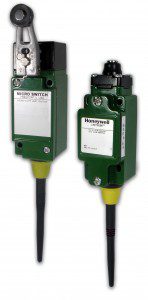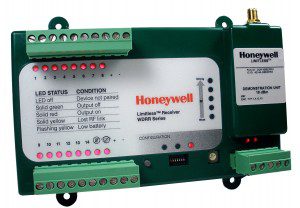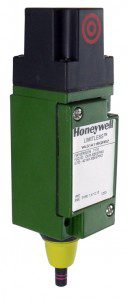Honeywell International Inc. invents and manufactures technologies such as energy efficiency, clean energy generation, safety and security, globalization, and customer productivity. With approximately 132,000 employees worldwide, including more than 22,000 engineers and scientists, its focus is on performance, quality, delivery, value and technology. Honeywell traces its roots back to 1885, and the invention of the furnace regulator and alarm. In 1904, Mark Honeywell was perfecting the heat generator as part of his plumbing and heating business. Two years later, he formed the Honeywell Heating Specialty Co., which specialized in hot water heat generators. In 1927, Minneapolis Heat Regulator Company and Honeywell Heating Specialty Co. merged to form the Minneapolis-Honeywell Regulator Co. The company made several acquisitions in the controls area. Minneapolis-Honeywell Regulator Co. had long been selling its products around the world through distributors. In 1957, Minneapolis-Honeywell Regulator Co. purchased a fire detection and alarm firm, the first of many acquisitions that would build its security business into today’s global leader. The red and black “Protected by Honeywell” window stickers and placards became nearly as recognizable as the “Round” thermostat. The company’s name was officially changed to Honeywell Inc. in 1963, even though it had been casually referred to as such for nearly 40 years. By 1998, the company had operations in 95 countries through 83 wholly owned subsidiaries and 13 joint ventures.
Honeywell’s top competitors are BorgWarner, Johnson Controls, United Technologies, ABB, Ltd., and Parker-Hannifin. Each of these companies has different product focuses and business segment industries.
 As the market becomes more volatile, there’s a demand to be more agile. Honeywell Sensing and Control’s most challenging endeavor is the ability to manufacture its own dies. Whether it’s for a pressure, magnetic, or positioning sensor or switch, this company can create the right die without the dependency on commercially available dies. Controlling the process from the initial die to the completed sensor is a long lead item (16 wks). Having its own die allows them to design and manufacture the die that best fits what customers want and what is done at the die level.
As the market becomes more volatile, there’s a demand to be more agile. Honeywell Sensing and Control’s most challenging endeavor is the ability to manufacture its own dies. Whether it’s for a pressure, magnetic, or positioning sensor or switch, this company can create the right die without the dependency on commercially available dies. Controlling the process from the initial die to the completed sensor is a long lead item (16 wks). Having its own die allows them to design and manufacture the die that best fits what customers want and what is done at the die level.
Addressing markets with long life cycles: transportation; medical; and industrial, customers often design things to last 5-20 years. Because Honeywell has its own die, customers design cycles can remain unchanged without customers being forced to redesign when they don’t want to. This means the customer doesn’t have to requalify their products, which is expensive and time consuming. Product obsolescence is a big deal. By developing and manufacturing dies, the issues of supply chains are nominal. In addition, it’s easier to adapt to new customers as well as established customers’ changing technical requirements. It has proven beneficial for Honeywell to have access to its own fabrication, which allows immediate response to customers’ needs.
The one thing not widely known about Honeywell is the width and breadth of its sensing and control’s product lines. They produce over 500 million sensors and switches for use in industrial, military and aerospace, medical, transportation, and test and measurement applications every year. The pressure sensors are used in large tractors and construction cranes as well as in tiny, precise motors for surgical instrument and diagnostic equipment.
When seeking growth product-wise, there are some core technologies where expansion is anticipated, such as pressure and magnetic, speed sensing, and position sensing. With its wide portfolio, its platform approach enables them to easily configure a certain technology to a wide range of specific parameters. As they plan to grow even more in those areas, satisfying customers designs and what best meets their needs is always paramount.
The corporate culture is a global, performance driven, and customer focused culture. Being a true global company allows for a global mindset, which in turn, allows global opportunities. “The Honeywell culture is very open and transparent. Openness is the way we do things. This transparency  enables team members to feel comfortable with engaging at all levels. Honeywell values people who embrace moving forward by doing the right thing rather than just playing politics. There’s a belief that it’s better to hire from within, so there’s a lot of opportunity”, said Lionel Caillat, Vice President and General Manager, Electronic Sensing.
enables team members to feel comfortable with engaging at all levels. Honeywell values people who embrace moving forward by doing the right thing rather than just playing politics. There’s a belief that it’s better to hire from within, so there’s a lot of opportunity”, said Lionel Caillat, Vice President and General Manager, Electronic Sensing.
The need for sensors is exploding and there are many more potential sensor applications than could have ever been predicted. The biggest challenge Honeywell faces over the next year is reaching out to its targeted customer base. In addition, making this ever more fragmented target base more aware of the company’s diverse portfolio. The big customers in key segments (direct) are easier to reach; however, using an “execute” strategy will help engage with smaller customers. Seeing value in its configurable platforms allows Honeywell to meet a large number of design engineers’ needs. Alignment and communication with those design engineers ensures having the right product at the right price. Optimistically, users are going to put sensors in places never thought about. The goal is to make sure that developers and manufacturers are aware that Honeywell has the right portfolio as well as the technical expertise to help them create these new, exciting products.
 Limitless_Non-Contact Switch2Over the past five years the number of companies seeking out Honeywell’s products is changing. Similarly, the types of companies looking to use advanced sensing and switching technologies is changing as well. It is expected for more companies, with a wider range of products, will need sensors. As it becomes easier to connect things on the Internet, the demand to collect information generates an increased need for sensors of all types. Gone are the days of the large giant companies leading the demand for sensor technologies. Because there are a lot of start-ups developing new and creative ways to use sensors, these start-ups are going to be a big and important market for them. Which, in turn, will open up a wide variety of markets in the industrial, manufacturing and consumer sectors.
Limitless_Non-Contact Switch2Over the past five years the number of companies seeking out Honeywell’s products is changing. Similarly, the types of companies looking to use advanced sensing and switching technologies is changing as well. It is expected for more companies, with a wider range of products, will need sensors. As it becomes easier to connect things on the Internet, the demand to collect information generates an increased need for sensors of all types. Gone are the days of the large giant companies leading the demand for sensor technologies. Because there are a lot of start-ups developing new and creative ways to use sensors, these start-ups are going to be a big and important market for them. Which, in turn, will open up a wide variety of markets in the industrial, manufacturing and consumer sectors.
Honeywell

Leave a Reply
You must be logged in to post a comment.